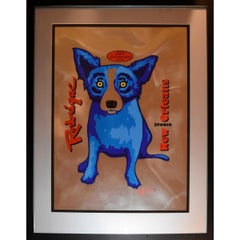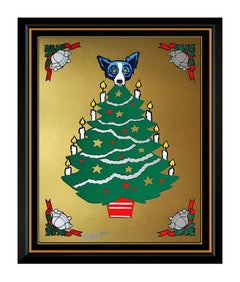George Rodrigue New Orleans
Early 2000s Pop Art Animal Prints
Screen
Recent Sales
Early 2000s Pop Art Animal Drawings and Watercolors
Ink
Early 2000s Expressionist Animal Prints
Screen
1990s Pop Art Animal Prints
Screen
2010s Pop Art Animal Prints
Digital
1990s Animal Prints
Lithograph
Early 2000s Pop Art Animal Prints
Screen
Early 2000s Pop Art Figurative Drawings and Watercolors
Ink
People Also Browsed
Early 2000s Pop Art Animal Prints
Screen
1990s Pop Art Animal Prints
Screen
1990s Pop Art Animal Prints
Screen
1990s Pop Art Animal Prints
Screen
1990s Pop Art Animal Prints
Screen
1990s Pop Art Animal Prints
Screen
Early 2000s Pop Art Animal Prints
Screen
1990s Pop Art Animal Prints
Screen
Early 2000s Pop Art Animal Prints
Screen
1990s Pop Art Animal Prints
Screen
1990s Pop Art Animal Prints
Screen
1990s Pop Art Animal Prints
Screen
1990s Pop Art Animal Prints
Screen
1990s Pop Art Animal Prints
Screen
Early 2000s Pop Art Animal Prints
Screen
1990s Pop Art Animal Prints
Screen
George Rodrigue for sale on 1stDibs
From New Iberia, Louisiana, George Rodrigue is known for his Blue Dog series, inspired by his long-deceased childhood pet, Tiffany, whom he posed with other animals and people for his popular paintings and prints.
Rodrigue had early art talent, and while ill for nearly a year, he used watercolors and crayons to pass the time, and this activity set his future. He studied at the University of Southwestern Louisiana and in Los Angeles at the Art Center College of Design. For a while, Rodrigue painted Abstract Expressionist works but then went back to creating paintings that reflected his own Cajun culture, including folk tales and bayou and swamp landscapes.
Gradually a black and white spaniel, based on his childhood companion, Tiffany, increasingly appeared in Rodgrigue's paintings and became the Blue Dog, now a compelling and humorous Pop figure in his original works and silkscreen reproductions. In 2000, representatives of the Xerox corporation commissioned Rodrigue with a multi-million dollar contract to do a series of Blue Dog paintings to promote their printers.
Rodrigue was also the artist for the Absolut Vodka ads and created the artwork for three New Orleans Jazz and Heritage Festival posters. The 1995 poster, with the portrait of Louis Armstrong, as well as the one created in 1996 that featured Pete Fountain, have become collector's items.
Rodrigue and his wife, Wendy, created the House of Blues Foundation Room to support arts and cultural programs for youth. Money is raised through the sale of his paintings. A George Rodrigue museum is in Lafayette, Louisiana.
Find original George Rodrigue posters and Blue Dog paintings on 1stDibs.
(Biography provided by Louisiana Art, LLC)
Finding the Right Prints And Multiples for You
Decorating with fine art prints — whether they’re figurative prints, abstract prints or another variety — has always been a practical way of bringing a space to life as well as bringing works by an artist you love into your home.
Pursued in the 1960s and ’70s, largely by Pop artists drawn to its associations with mass production, advertising, packaging and seriality, as well as those challenging the primacy of the Abstract Expressionist brushstroke, printmaking was embraced in the 1980s by painters and conceptual artists ranging from David Salle and Elizabeth Murray to Adrian Piper and Sherrie Levine.
Printmaking is the transfer of an image from one surface to another. An artist takes a material like stone, metal, wood or wax, carves, incises, draws or otherwise marks it with an image, inks or paints it and then transfers the image to a piece of paper or other material.
Fine art prints are frequently confused with their more commercial counterparts. After all, our closest connection to the printed image is through mass-produced newspapers, magazines and books, and many people don’t realize that even though prints are editions, they start with an original image created by an artist with the intent of reproducing it in a small batch. Fine art prints are created in strictly limited editions — 20 or 30 or maybe 50 — and are always based on an image created specifically to be made into an edition.
Many people think of revered Dutch artist Rembrandt as a painter but may not know that he was a printmaker as well. His prints have been preserved in time along with the work of other celebrated printmakers such as Pablo Picasso, Salvador Dalí and Andy Warhol. These fine art prints are still highly sought after by collectors.
“It’s another tool in the artist’s toolbox, just like painting or sculpture or anything else that an artist uses in the service of mark making or expressing him- or herself,” says International Fine Print Dealers Association (IFPDA) vice president Betsy Senior, of New York’s Betsy Senior Fine Art, Inc.
Because artist’s editions tend to be more affordable and available than his or her unique works, they’re more accessible and can be a great opportunity to bring a variety of colors, textures and shapes into a space.
For tight corners, select small fine art prints as opposed to the oversized bold piece you’ll hang as a focal point in the dining area. But be careful not to choose something that is too big for your space. And feel free to lean into it if need be — not every work needs picture-hanging hooks. Leaning a larger fine art print against the wall behind a bookcase can add a stylish installation-type dynamic to your living room. (Read more about how to arrange wall art here.)
Find fine art prints for sale on 1stDibs today.


